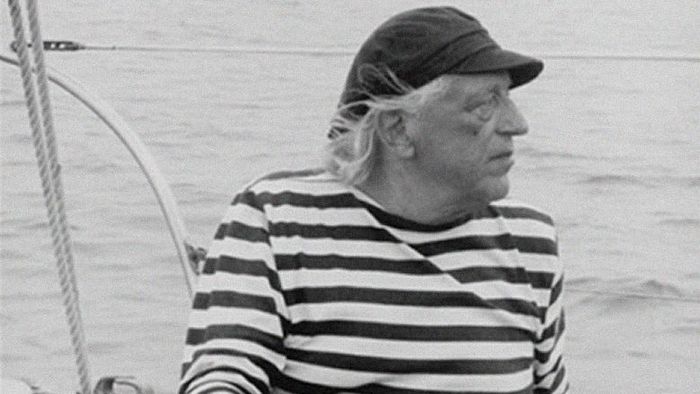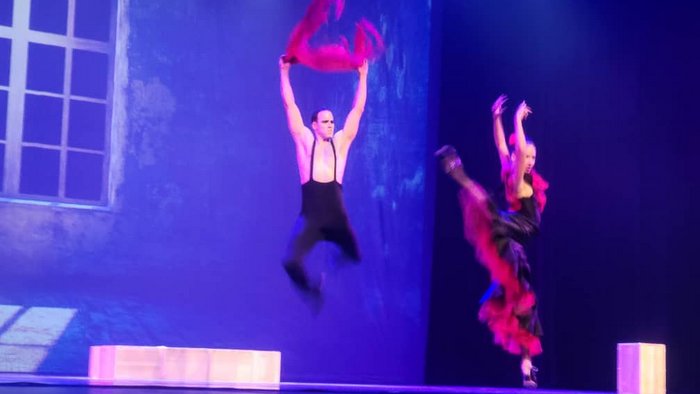The tragedy of a physical death will cause commotion; an allegoric death will make people shake far beyond the beauty it portrays
Simile no. 1
In March 2010, the so-called “red shirts” had a beautiful and unusual initiative. The AFP report that I got at home read “red shirts” leading a rally in Bangkok to overthrow the Thai government spilled their own blood at the government house in a symbolic gesture of sacrifice.”
Is there anyone among opposing leaders who knows that physical death can only be replaced by sublimating it through an allusion? Physical death will cause a shock because of the tragedy it implies; allegorical death moves you rather because of the beauty of the event it refers to, because it makes you think… “Metaphors do not bring down a government,” an artist once told me as we talked about political arts.
Blood, verifying fact, beauty, anesthetization of death: it seems to be no difference between the call by the “red shirts” to donate blood and a work by Mexican Teresa Margolles (Culiacan, 1963).
With an exhibition entitled What else could we talk about? the artist participated in the 53rd Venice Biennial in 2009. Among other works of art such as the display of jewels made out of pieces of shot-broken windshields, Margolles put together a scenario following the same modus operandi she had followed in some of her previous works: a room with red walls and a man inside it cleaning the floor with a mop soaked in a red liquid that turns out to be blood not water. The floor is covered with human blood and spectators melt with it as they walk in, they get it in their shoes and feel its smell. The blood comes from drug trafficking victims, regardless their social origin, sex or age. It is a whole mixture to which we can belong any time from now- although in fact, one is already part of it.
In comments about this work, the artist said: “I’m only putting out an invitation for reflection. I don’t have the solution. This pain is going to stay in a closed palace. This is the museum for me, a concentration of pain. What will happen after the exposition is over? Nothing is going to change”.
She and the Thai opposition are distinguished by the scenario: she is protected, in addition to the partial fiction that metaphors embody, by the typical aura emanating from galleries and museums (where almost everything is allowed); the Asians, in turn, by the use of metaphors. Only the nature of the space (that is if it is autonomous or heteronomous) puts each of them in the right place: her in the artistic realms; them in a clear political and performing demonstration.
Simile no. 2
They are stelae. The Brandenburg Gate in Berlin and a minimalist and atypical work of art: the Memorial to the Murdered Jews of Europe, are approximately 200 meters apart. Two thousand seven hundred eleven (2,711) concrete stelae arranged in a grid pattern in a 19,000 square meter site. Plain, gray monuments that attracts the attention for their austerity and lack of illustrative or didactic pretensions (in fact one of the goals of the project was to renounce to “any type of symbolism.”)
I can’t say they are a delight to the retina or a visual massage. I’m not sure they are. They are not overtly beautiful although they do are crushingly attractive. There is some sort of a challenge in those pieces that keeps pushing our feelings beyond perception because the truth is that they do shake the soul. Maybe it is because of the repetition of the gray color expanding in front of our eyes or because we know they stand there as a criticism to unlimited genocide. Perhaps it’s both.
However, this disposition to sadness suffers a short-circuit, it is broken up by children running among the slabs and on the paving stones as if they were in an amusement park, or what is even worst, by adolescents, youngsters and adults who lie in them to take the summer sun.
It is nearly an absolute true that anything can be justified by the presence of the sun in the European sky.
In spite of that, the confrontation between be and should be, between the preconceived mission of a monument and what it actually conveys leads to countless perplexities and questions that can be reduced to the following: if a fair number of people behave in such a careless way regardless such serious matters as violent death or genocide are, is there then a possibility for the event to recur?
The possible answers are numerous and I get into the underground with my head filled with doubts and a very objective truth. There it is the Information Center with its ceiling full of rectangular cracks as if it were the negative image of the stelae site. Inside, the museum design is crushing and excellent. Its creators managed to present “the document” (that is testimonies, letters, autobiographies, the database from Yad Vashem in Israel, etc) in different sophisticated ways. Down there people barely whisper something in the ear of the person next to them and so the tension out there, generated by the blend of “innocent” jubilation and adult or responsible commotion, fades away like an inversion of the attitude, thus, like a negative image.
Now, if the stelae site were one of Teresa Margolles’ works of art, she would have neutralized any attempts to fool around of the ignorant public. Perhaps, she would have engraved an explanatory text on one (or several) floor tile: “the paving stones you are stepping on right now were made out of stones that were used to simulate the soaps that were given to prisoners when they headed to the gas chamber of Auschwitz-Birkenau”.
But that sort of a statement would make many visitors panic and within a year very few people in the world would enjoy walking among those gray rectangular structures. Because complicity is only accepted at the media level and very few people would risk being so close to horror.
Such disclosure would apparently produce a long-lasting work and a clearly ephemeral memorial due to the absence of visitors in the long term.
As a work of art (not as historical legacy) it would last as long as if it were in a gallery or a museum. Being a monument with a special mission it would last as long as a program in the art circuit: six months at the most. The nature of the space –heteronomous, conceived for mass visitations– does not allow for this type of bonds.
If the metaphor saved the “red shirts” from repression, in this case she would turn the monument into something she did not wanted it to be by only writing that statement in the paving stones. They would swallow up each other.
Suspense or a question of
horror and mystery
If you knew that as you enter a gallery to see a piece entitled “On the air” (2003) by Teresa Margolles, gleaming bubbles will crash into your body, bubbles like the ones we played with when we were kids, and you come across a text reading: “Bubbles made from water from the morgue that was used to wash corpses before autopsy”, would you walk in? Would you let yourself be splashed and touched by death?
The survival
Coming from the artistic group SEMEFO (Medical Forensic Services), who used to be more radical in the 1990s, Teresa Margolles moved from an aggressive and narrating aesthetics to a minimalist-conceptualist and neo-symbolic lineage (I will explain bellow why I use the term ‘neo-symbolic’). She passed from the caustic gesture to a certain aesthetic and methodologist refinement (not meaning covering up). When asked about the subject she said: “In general, I’m trying to work with the symbol of the corpse and not necessarily with the matter, that’s why we did the performance in Havana in which we used human fat to fill wholes in a house located just across the place where the Biennial participants gathered.”1
“Dermis” (1996), “Lengua/Tongue” (2000) and “Autorretratos en la morgue/Self-portraits in the Morgue” (1998) are works clearly remembered from that period. In the latter series, consisting in a photographic essay, the artist takes pictures of herself standing next to the dead bodies of unidentified people who suffered a violent death. Margolles, as any self-respecting creator, was enteringthe fascinating and at the same time dangerous realm of ethics. And her shield turned out to be social criticism of a history full of violence and official stiffness as an answer that mortgages not only life itself but also human existence in all of its dimensions.
Mexico appears to be a breeding ground for those affairs, and its capital city, the perfect emporium. Teresa Margolles’ first stage reminds me of Joel-Peter Witkin’s “Glassman” (1994) not only because their common interest in a harsh death but also because the aural-religious nuances the American sees in a violent death have been as well a starting point to interpret the Mexican’s poetry. Margolles’ poems have been compared to the legend of Saint Veronica’s veil, especially: “The Cloth of the Dead” (2003), in which the artist used pieces of fabric printed with fluids from dead bodies.2
“Glassman” is the title of a picture taken by Witkin of a young Mexican and punk (punk was a young man whose tongue was used by Teresa Margolles in an installation placed in the Fine Arts Palace). “When bodies are brought from the street, there’s sometimes a doubt as to how the person died”, the photographer said.3 Beyond the factual body, what matters is the circumstances, the how, the grammar of the death. A concern shared by the artists.
“Glassman” is an extremely repulsive close-up image of a grotesque, repulsive and a bit dirty corpse with the sewn torso and with San Sebastian’s torment look: “He’s being judged. This guy is being judged right now,” his translator said. “Without Title (Catafalque 1)” is a Hellenic-type bust also sewn across the torso made by Margolles in 2005. Although works like these are not frequently found in the artist’s visual repertoire, nor it is one of the most astonishing of them, it does excels for the use of three dimensions, and it marks a turning point within her work towards modern objects, a resource rarely used by her, as she is more fond of the action, the implication.
So much so that the Mexican has taken the practice of art to unthinkable boundaries. The use of organic matters (blood, thread to sew corpses, water to wash them, etc) places Teresa Margolles’ work in a vague borderline between what we can call the real and the fiction, between the physical (organic) and the mental construction. That is why I used the term neosymbolism before, in reference to the Mexican artist’s works that do not allude to death but instead, they bring it on stage, they re-present it, put it right there through the use of such materials, their origin and also because she uses texts as verifiable and objective documentation to dispel any doubts about the work. That is a hallmark of the symbolic universe, where we are closer to the “issue.” There ares no distances in symbolism, there is no mediating trope: Teresa Margolles’ work lies beautifully somewhere between the symbol and the allegory. Her work is not a meaning, it speaks for itself: the evoked and the evoker are nearly the same thing. Perhaps that was the reason why Niklas Maak finished a very good article about her by stating: “Minimal art has reached its zero point.”4
Being part of a group of creators including Santiago Sierra and Francis Alÿs, Margolles takes root in the logic of the facts. She makes a call that goes beyond the poetic and makes you an accomplice in a sort of perverse and sadist manner. She drags you in to make you an accomplice and to fill your life with a mixture of sensations that are all confusing, attractive and repulsive at the same time. “En 127 cuerpos/In 127 bodies,” 2006, a rope is hung across the exhibition room and small pieces of brownish-red-stained cotton thread are hanging down from the rope. It is this simple, like Doris Salcedo’s crack on the floor of the Tate, the rope divides the room into two spaces which can be broken in by just bending down and crossing under the rope to the other side. Speculations about the arbitrary way she used to divide the room can be so many as to write a book, until we come across with a text –we have already said explanatory texts are key in her work: “Remnants of thread used after the autopsy to sew up bodies of persons who have suffered a violent death. Each thread represents a body.” Thus, we are faced with a poetics of shock, not in the sense referred to by Walter Benjamin when talking about profane illuminations commonly seen in serial and mass art consumption, but in terms of actual collapse, mental knockout.
This way, the innocence of the presentation is ripped off. The stylistic ritual of explaining the origin of the materials is still macabre. I state this and I know I do it from the perspective of the terrified viewer because the artist means her call. However, the work does not force you to take communion, it does not achieve a pantheistic relationship with death as it does in “Banco/Bank” and in “Agua de la ciudad de México/Water in Mexico City” (2004) and the reedited “Vaporización/Vaporization” (2001). The first one is a video-installation. In the film, a morgue worker washes dead bodies with a hose, among them the body of a girl. In front of the screen, there is the same bench set to get a nice view of the film, but it is not a common bench, it was built with a mix made with the same water the man in the video is using to wash the cadavers. The viewer has two ways out: to jump up from the bench or to remain stoic and pretend to sympathize with cause. “Vaporización”, as far as I know, has not been superseded, not even by “In the air” regarding her efforts to have us involved: a room full with steam, just like a sauna. The origin of the precious liquid is the same: “vaporized water from morgue that was used to wash the bodies of murder victims after autopsy,” the text reads. The vapor gets into our bodies through all of our cavities; our whole body is pervaded by the steam. There is no choice but to scream and run away or to stand there in stupefaction to enjoy an unusual act of purification or an unexpected and involuntary therapy.
We are what Teresa Margolles has called the “cadaver’s life”, we are the survivors; we are others’ survival, not the remnants she used in her environments. Her works turn against us (after being inside us) not because they attempt against our mental integrity through an act the Western has not been able to understand yet, but because they question us. She does not hesitate to dig into our souls to find out our endurance capacity or our willingness to face the responsibility of horror
at least with a nervous giggle in our eyes or lips.
Teresa Margolles talks to us and questions our right to survival as long as we seek protection in the “I don’t care” phrase. If viewers had a noble relationship with death (like myself), all of the sudden they will see themselves imbued with it. The artist has brought Heidegger’s enigmatic “being-for-death” idea into the realm of arts, throwing our finesse right in our bodies (not just in our faces), and at the same time pulling our ethic filaments– and hers–: art lovers from all over the world, do you really know where you are heading to? What is your fate? After leaving the “hookers district” that is the gallery, would you still think about violent death and will you do something to avoid it?
One of the mainstays of the artist’s new teleology, in terms of success, lies in the surprise factor. No one would like to be a victim of murder (even symbolically speaking) but that is what an encounter with Teresa Margolles’ work is very likely to be holding for us. Even when knowing her modus operandis, we are driven by the morbid fascination in art. Curiosity is killing us.
She, on her part, does her thing: she has a provoking and sadist work, she takes vital risks and she dresses in black as in a perennial mourning. Now, we will see if she keeps up with her plays once the formula stops working.
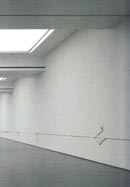

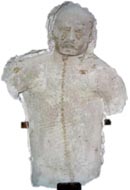
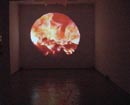
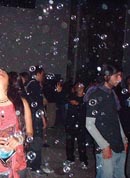

Publicación anterior Catharsis and Exorcism in Sandra Ramos
Publicación siguiente Architectural Minimalism: A Loft for Living and Working



